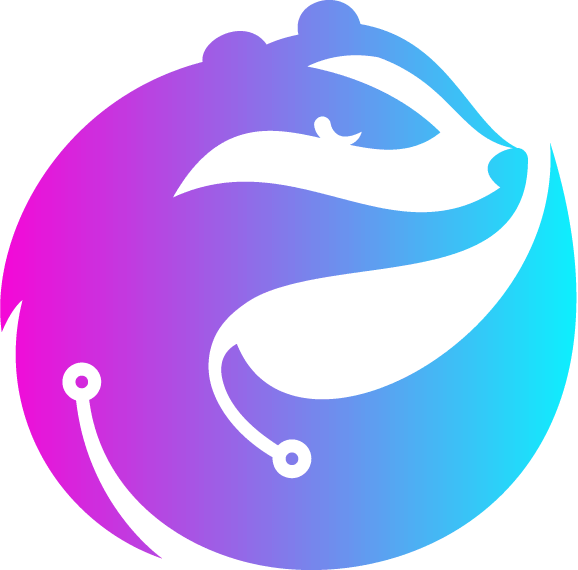What is SEO Copywriting? 7 Tips To Help You Start
By Frank Peckett | February 01, 2024

SEO copywriting is an essential skill in the realm of digital marketing that involves the craft of composing content that appeals to both human audiences and search engine algorithms.
The primary goal is to create engaging and informative content that also incorporates targeted keywords and phrases, which are pivotal for improving a website's search engine rankings.
Effective SEO copywriting ensures that your content is discoverable by users who are searching for topics or products relevant to your business. By integrating these strategically chosen keywords into your articles, blog posts, product descriptions, and other forms of web content, you make it easier for search engines like Google to understand and index your content, which can lead to higher positions in search results.
Understanding SEO copywriting also means recognizing the delicate balance that must be struck between optimization for search engines and the creation of content that provides genuine value to the reader.
It is not enough to simply stuff content with keywords; the writing must also be compelling, clear, and useful to the audience. A well-crafted piece of SEO content will naturally incorporate keywords in a way that feels organic, never forced or out of place. This focus on reader-friendly content not only helps with user engagement and retention but also aligns with the sophisticated algorithms used by search engines that prioritize high-quality, relevant content in their rankings.
As a strategic component of digital marketing, SEO copywriting is about more than just attracting visitors to a website; it's also about converting those visitors into customers.
By providing content that resonates with readers and addresses their needs and interests, businesses can foster trust and credibility with their audience. Implementing best practices in SEO copywriting can lead to an enhanced online presence, drawing more potential customers to your site.
When done effectively, it not only improves the visibility of your brand but can also contribute to an increase in conversions and revenue. Thus, mastering SEO copywriting is an investment in the long-term success of your digital marketing efforts, helping to bolster your business's bottom line.
1. Matching Search Intent
In the realm of Search Engine Optimization (SEO), understanding search intent is paramount. Search intent refers to the purpose behind a user's query on a search engine. By crafting content that aligns with the specific intent of searchers, you not only improve user satisfaction but also increase your chances of ranking higher in search engine results pages (SERPs). There are four primary types of search intent: informational, navigational, commercial, and transactional.
Informational intent: involves searches conducted to find information on a broad topic or to answer a specific question. Users with informational intent might enter queries like "how to bake a cake" or "what is climate change?" To target informational intent, you must provide clear, authoritative content that educates and informs. This can be achieved through blog posts, how-to guides, and informative articles.
Navigational intent: referres to when users search for a particular website or page. For example, someone might search for "Facebook login" or "New York Times crossword." Here, the user knows where they want to go; they're just using the search engine as a navigation tool. To optimize for navigational intent, ensure that your brand and pages are easily identifiable and that your internal linking structure is logical and user-friendly.
Commercial intent falls between informational and transactional. Users are considering a purchase or are looking to a future transaction but are still in the decision-making process. They might look up "best smartphones 2023" or "electric car reviews." To capture commercial intent, content should be persuasive and highlight the benefits and differentiators of products or services. Comparisons, reviews, and buyer guides are useful content formats for this intent.
Transactional intent is when a search is made with the purpose of completing a transaction or making a purchase. Searches like "buy running shoes online" or "discount codes for kitchen appliances" are transactional. To optimize for this intent, your e-commerce pages need to be streamlined, trustworthy, and provide all the necessary information for a user to make a purchase.
Writing for search intent is not just about keyword stuffing; it's about understanding the user's purpose and providing content that satisfies that need. By identifying and creating content that aligns with the four types of search intent, you can significantly improve your SEO performance and drive more targeted traffic to your site.
2. Performing Keyword Research
Keyword research is a fundamental aspect of Search Engine Optimization (SEO) that involves identifying the terms and phrases people are using to search for information online. It is the process of discovering the actual search terms that individuals enter into search engines when conducting a search.
By understanding these terms, also known as keywords, businesses and content creators can tailor their content to better align with the search intent of their target audience.
The importance of keyword research in SEO cannot be overstated. It is the cornerstone of any successful SEO strategy for several reasons:
Relevance: Keyword research helps ensure that the content being created is relevant to the audience's needs and interests. By targeting the right keywords, websites can attract a more focused audience that is likely to engage with the content, products, or services offered.
Visibility: Properly researched keywords can improve a website's visibility on search engine results pages (SERPs). By optimizing content for popular and relevant keywords, a site can rank higher, which often leads to increased traffic.
Competition Analysis: Researching keywords also involves analyzing competitors to understand the keywords they are targeting. This insight allows businesses to identify gaps in the market and opportunities to target keywords that competitors may have overlooked.
Understanding User Intent: Different keywords signify different user intents—from informational queries to transactional searches. Keyword research helps in understanding what users are looking for and the type of content that will satisfy their query.
Content Strategy: Keywords serve as a guide for content creation, ensuring that the content strategy is aligned with user search patterns. This alignment increases the chances of content being seen and driving traffic to the website.
Conversion Optimization: By targeting keywords with high commercial intent, businesses can attract users who are closer to making a purchase decision, leading to higher conversion rates.
Keyword research is a vital activity for anyone looking to improve their online presence through SEO. It informs content strategy, helps understand the audience, and ultimately leads to better search engine rankings, more traffic, and increased conversions. Without it, efforts to optimize a website for search engines are often unfocused and less effective.
3. Optimizing Content for SEO
Balancing the art of writing with the science of SEO is a key skill for any SEO copywriter. The content must provide valuable information to readers, answering their queries and providing insightful perspectives, while also meeting the technical requirements of search engines.
This includes optimizing title tags, meta descriptions, and ensuring the content is structured in a way that search engines can easily understand and index.
SEO copywriters must remain adaptable and informed about the latest SEO trends and best practices, as search engine algorithms are constantly evolving. Keeping abreast of these changes allows copywriters to refine their strategies and continue to create content that is not only impactful but also performs well in the ever-competitive digital landscape.
As we have already stated in this article, keyword research is crucial. Identify relevant keywords and phrases that your audience is searching for and integrate them naturally into your content. Use them in your titles, headings, and throughout the body of your text, but avoid keyword stuffing, as this can lead to penalties from search engines.
Content quality is paramount. Search engines prioritize content that provides value to users. Your articles should be informative, well-written, and engaging. Writing in a natural, reader-friendly style not only provides a better user experience but also aligns with search engines' increasing ability to interpret natural language and the intent behind search queries.
Originality is key, as duplicate content can harm your SEO efforts. Additionally, ensure your content is up-to-date and regularly refreshed to maintain relevance.
Meta tags, including title tags and meta descriptions, should be optimized with primary keywords to improve click-through rates from search engine results pages (SERPs).
These tags should accurately describe the content of the page in a concise manner. A well-crafted meta description can improve click-through rates, while an effective title tag is not only a ranking factor but also the first impression many users have of your content.
Another vital aspect is content structure. Use header tags (H1, H2, H3) to organize your content hierarchically and enhance readability. This structure helps search engines understand the main points and subtopics within your content.
Lastly, mobile optimization is non-negotiable. With the increasing number of users accessing the internet via mobile devices, your content must be mobile-friendly. Fast loading times, responsive design, and accessible navigation contribute to a positive user experience and are factors in search engine rankings.
By focusing on these elements, you can optimize your content for SEO effectively, leading to better search engine rankings, increased traffic, and higher engagement with your audience.
4. Employing Writing Techniques
Consider applying certain writing techniques when writing content for SEO. One of them is The Problem-Agitate-Solution (PAS) technique that is a persuasive writing and marketing strategy used to capture the attention of an audience, emphasize their pain points or challenges, and then present a solution to their problem. It's particularly effective in advertising, sales copy, and content marketing. Here's a breakdown of the three components:
- Problem: The first step is to identify and clearly articulate a problem that the target audience is experiencing. This problem should be relevant and significant to the audience, so they feel a connection to what's being discussed. By highlighting the problem, you establish a need and create a sense of urgency.
- Agitate: Once the problem is presented, the next step is to agitate it. This means digging deeper into the problem and emphasizing the pain points, consequences, or discomfort it causes. The goal here is to evoke an emotional response from the audience by making them feel the impact of the problem more acutely. However, it's important to strike the right balance and not overdo the agitation, as it could overwhelm or turn off the audience.
- Solution: After the problem has been established and agitated, you then present the solution. This solution should be a product, service, or idea that effectively resolves the problem you've highlighted. The key is to show how the solution alleviates the pain points and improves the situation for the audience. The solution should be presented as the best or most logical answer to the problem, making it clear why the audience should take the desired action, whether that's making a purchase, signing up for a service, or adopting a new perspective.
The PAS technique is powerful because it not only identifies a problem but also connects emotionally with the audience before offering a resolution. This method can create a persuasive narrative that encourages the audience to take action.
5. Building Authority
Authority in SEO plays a crucial role. This is why understanding the E-A-T concept is extremely important for SEO. E-A-T stands for Expertise, Authoritativeness, and Trustworthiness. It's a set of criteria that Google uses to assess the quality of content on the web. Here's a brief explanation of each component:
- Expertise: This refers to the creator's knowledge of the subject matter. Google looks for content created by experts in their respective fields because expert content is more likely to be accurate and comprehensive. For example, medical information should be provided by healthcare professionals.
- Authoritativeness: This is about the credibility of the website publishing the content, as well as the content creator. It involves the site's reputation in its field. High-quality backlinks, mentions from respected authorities, and other indicators can contribute to a site's perceived authoritativeness.
- Trustworthiness: Trustworthiness relates to the reliability and honesty of the site and its content. Secure websites (using HTTPS), transparent information about the business or content creators, clear disclaimers, privacy policies, and accurate content all contribute to a site's trustworthiness.
Google's Search Quality Rater Guidelines emphasize E-A-T as an important factor in determining the quality of a page, especially for YMYL (Your Money or Your Life) pages that could potentially impact a user's health, financial stability, or safety. While E-A-T is not a direct ranking factor like site speed or use of keywords, it influences the overall quality of the site, which in turn can affect search rankings.
6. Using Images and Media
Using images and media in SEO is crucial for several reasons. Firstly, they enhance user engagement by breaking up text and making content more visually appealing, which can reduce bounce rates and encourage visitors to spend more time on a page. This signals to search engines that the content is valuable, potentially improving rankings.
Secondly, images and media provide additional opportunities for keyword optimization. Through file names, alt text, and captions, you can include relevant keywords that help search engines understand the context of your content, making it more likely to appear in search results.
Moreover, images and media can appear in image and video search results, opening another avenue for traffic to your website. With proper optimization, your visual content can rank in these specialized searches, increasing your visibility and attracting a wider audience.
Lastly, content with images and media is more shareable on social media, leading to increased exposure and backlinks. These backlinks are a key ranking factor for SEO, as they indicate to search engines that other websites consider your content credible and authoritative.
In short, images and media are not just about aesthetics; they're an integral part of SEO strategy that can boost your site's visibility, user engagement, and authority.
7. Optimizing Content for Features Snippets
Finally, consider optimizing your content for feature snippets. These are highlighted excerpts displayed at the top of Google's search results, and optimizing content for them involves several strategies to increase the chances of your content being selected. Here's how you can optimize your content for featured snippets:
- Understand the Types of Featured Snippets:
- Paragraph snippets: Provide answers in a text block.
- List snippets: Display content in a bulleted or numbered list.
- Table snippets: Present data in a table format.
- Identify Commonly Asked Questions:
- Use keyword research tools to find questions related to your topic.
- Analyze the "People also ask" section in Google search results for additional insights.
- Structure Your Content Appropriately:
- Use clear, concise headings (H1, H2, H3) to structure your content.
- Answer questions directly under the relevant headings.
- Keep your answers succinct (around 40-60 words) for paragraph snippets.
- Use Lists and Tables:
- For list-based queries, use bullet points or numbered lists.
- For comparison or data-centric queries, organize information in tables.
- Optimize for On-Page SEO:
- Ensure your content is well-written and relevant to the search query.
- Include the target question in the page title, meta description, and within the content.
- Use schema markup to help search engines understand the structure of your content.
- Improve Page Authority:
- Build high-quality backlinks to your content.
- Ensure your website has a good overall SEO score.
- Keep Content Fresh and Updated:
- Regularly update your content to keep it current and accurate.
- Revisit top-performing pages and refine them for even better results.
- Use High-Quality Images:
- Include relevant, high-quality images as featured snippets often include an image.
- Target Long-Tail Keywords:
- Focus on long-tail keywords that are more specific and less competitive.
- Answer these specific queries directly and clearly in your content.
- Analyze Competitors:
- Look at the current featured snippet for the query you're targeting.
- Analyze what they're doing well and identify opportunities for improvement in your own content.
- Monitor and Adjust:
- Use analytics to track the performance of your content.
- Make adjustments based on what's working and what's not.
Remember that while you can optimize for featured snippets, it's ultimately up to Google's algorithm to decide which content gets featured. By following these best practices, you'll increase your chances of earning that coveted spot.
Conclusion
In conclusion, SEO copywriting enhances the overall user experience by providing valuable and relevant content. Search engines like Google prioritize websites that offer users helpful information and a positive browsing experience.
Thus, SEO copywriting is about more than just inserting keywords into text; it's about creating content that resonates with the audience and answers their questions or solves their problems. By doing so, businesses can establish trust and credibility with their audience.
Successful digital marketing strategies often rely on effective SEO copywriting techniques to reach and engage target audiences.
High-quality SEO content can help build a community of loyal followers, brand advocates, and repeat customers. In essence, SEO copywriting is a key component of digital marketing success and should not be overlooked, as it interlinks the objectives of search engine visibility, user satisfaction, and business growth.
Are you ready to create more, and write less?
Improve your copywriting strategy today! Try Yazo for free.



